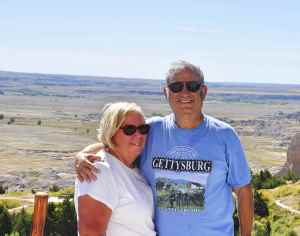Day 1468
It was a beautiful fall day. Covid was in the air. Time to seek out a waterfall.

Mingo Falls, from the Cherokee’s name for Big Bear, cascades 120 feet down the mountain.
The falls is on the Cherokee Indian Reservation and located on Mingo Creek before it empties into the Oconaluftee River.

We took The Pigeon Creek Trail to Mingo Falls. The hike to the waterfall runs alongside a rushing stream.

The trail is short, but you must climb 161 steps. At the top of the stairway a short path past rock outcroppings leads to a viewing area at the base of the falls.

The trail is 0.25 miles long and is moderately difficult, unless you have been sitting around the RV for 9 days, then it is very difficult. I didn’t tell Barbara I was beat, but each time she said she had to rest I said “oh, ok.”



























